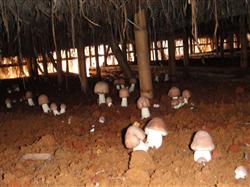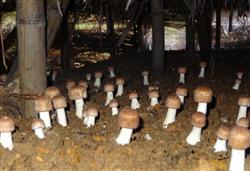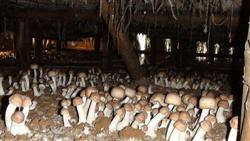Planting technique of Agaricus blazei Murrill: what is Agaricus blazei Murrill?

What is Agaricus blazei Murrill? Please introduce Agaricus blazei Murrill, also known as Agaricus blazei, which belongs to basidiomycetes subphylum, lamellae, Agaricus, Mushroom family and Mushroom genus. It is a related species of Agaricus bisporus, so its biological characteristics are more similar. Agaricus blazei Murrill is a Japanese trade name, meaning Pleurotus ostreatus. In fact, regardless of its shape and flavor, Agaricus blazei Murrill bears no resemblance to Tricholoma matsutake. In Japan, it is called Pleurotus ostreatus in order to adapt to the consumer psychology of the Japanese. In recent years, there has been a fever of eating Agaricus blazei Murrill in the Japanese market. Agaricus blazei Murrill is native to California and Florida in southern North America, as well as Brazil and Peru in northern South America. Agaricus blazei Murrill is a delicious wild edible medicinal fungus that occurs in coastal grasslands. It was introduced into Japan for domestication and trial cultivation in 1965 and was planted commercially in 1978. Agaricus blazei Murrill mushroom is crisp, tender and delicious, with almond flavor, and has certain anti-cancer activity, reducing blood lipids, improving arteriosclerosis and other effects, is a delicious and medicinal mushroom. ㈠ morphological characteristics: the fruiting body of Agaricus blazei is stout, the cap is oblate to hemispherical, the diameter is 5mi 11cm, the surface is covered with light brown to chestnut brown fibrous scales, and the cover edge is covered with fungal curtain fragments; the flesh is thick, white, orange-yellow after injury; the folds are free, dense, milky white at the beginning, and turn fleshy brown after injury. The stalk is cylindrical, medium-solid, the base of the stalk is slightly inflated, the stalk is 4 ~ 14 cm long and 2 ~ 3 cm thick, the stalk above the fungal ring is milky white, and there is chestnut brown below the fungal ring; the cilia are like scales; the fungal ring is attached to the upper part of the stipe, membranous, white; spores print dark brown, spores smooth, broadly oval to globose. ㈡ living conditions 1. Nutritious Agaricus blazei Murrill mycelium can use sucrose and glucose as carbon source, can not use soluble starch, can use ammonium sulfate, ammonium nitrate and so on as nitrogen source, can not use peptone; 7% sucrose, 0.3% ammonium sulfate is the most suitable nutrient concentration. Agaricus blazei Murrill can decompose and use crop straw, animal manure and sawdust as carbon and nitrogen sources, so it can be planted with these agricultural wastes. two。 Temperature Agaricus blazei Murrill is a saprophytic fungus that occurs in grassland in summer and autumn. The temperature range of mycelial growth was 10 ℃ 30 ℃, the optimum temperature for mycelium growth was 23 ℃, and the optimum temperature for fruiting body was 22 ℃. 3. When the ratio of material to water in the planting substrate is in the range of 1RU 1.2 Mel 1.4, the mycelium of Agaricus blazei Murrill can grow, and the optimum ratio of material to water is 1RU 1.4; the optimum water content of the overlying soil layer is 60% Mel 65%; the air relative humidity of the fruiting body is 80% Mel 95%, and the optimum RH of the fruiting body is 85% Mel 95%. 4. The mycelium of Agaricus blazei Murrill could grow in the range of pH4.5-8.0, and the optimum pH was 6.07.5. 5. Light Agaricus blazei Murrill mycelium growth does not need light; fruiting body development can not have direct light, light affects the quality of fruiting body. 6. Air Agaricus blazei Murrill mycelium growth and fruiting body development need fresh air, fruiting body occurs need a lot of fresh air, carbon dioxide concentration more than 0.5% affects its mycelium growth and fruiting body development. Click to get more planting techniques of Agaricus blazei Murrill
- Prev

Planting techniques of Agaricus blazei Murrill: how to grow Agaricus blazei Murrill?
How to grow Agaricus blazei Murrill? Please introduce the method of planting Agaricus blazei Murrill can refer to the following planting methods: ㈠ planting material Agaricus blazei Murrill the most suitable planting material is bagasse. It can also be planted with rice straw, wheat straw, cottonseed hull, corn stalk, thatch, sawdust and so on. In one or more of the above mixed sources.
- Next

Planting techniques of Agaricus blazei Murrill: how to grow Agaricus blazei Murrill in the north?
How to grow Agaricus blazei Murrill in the north? Please introduce the method due to climate constraints in the north, Agaricus blazei Murrill cultivation has been restricted. In view of the problems existing in the cultivation of Agaricus blazei Murrill at home and abroad, the biological characteristics of Agaricus blazei Murrill were systematically studied according to the resources and climate characteristics of Northeast China.
Related
- Fuxing push coffee new agricultural production and marketing class: lack of small-scale processing plants
- Jujube rice field leisure farm deep ploughing Yilan for five years to create a space for organic food and play
- Nongyu Farm-A trial of organic papaya for brave women with advanced technology
- Four points for attention in the prevention and control of diseases and insect pests of edible fungi
- How to add nutrient solution to Edible Fungi
- Is there any good way to control edible fungus mites?
- Open Inoculation Technology of Edible Fungi
- Is there any clever way to use fertilizer for edible fungus in winter?
- What agents are used to kill the pathogens of edible fungi in the mushroom shed?
- Rapid drying of Edible Fungi

